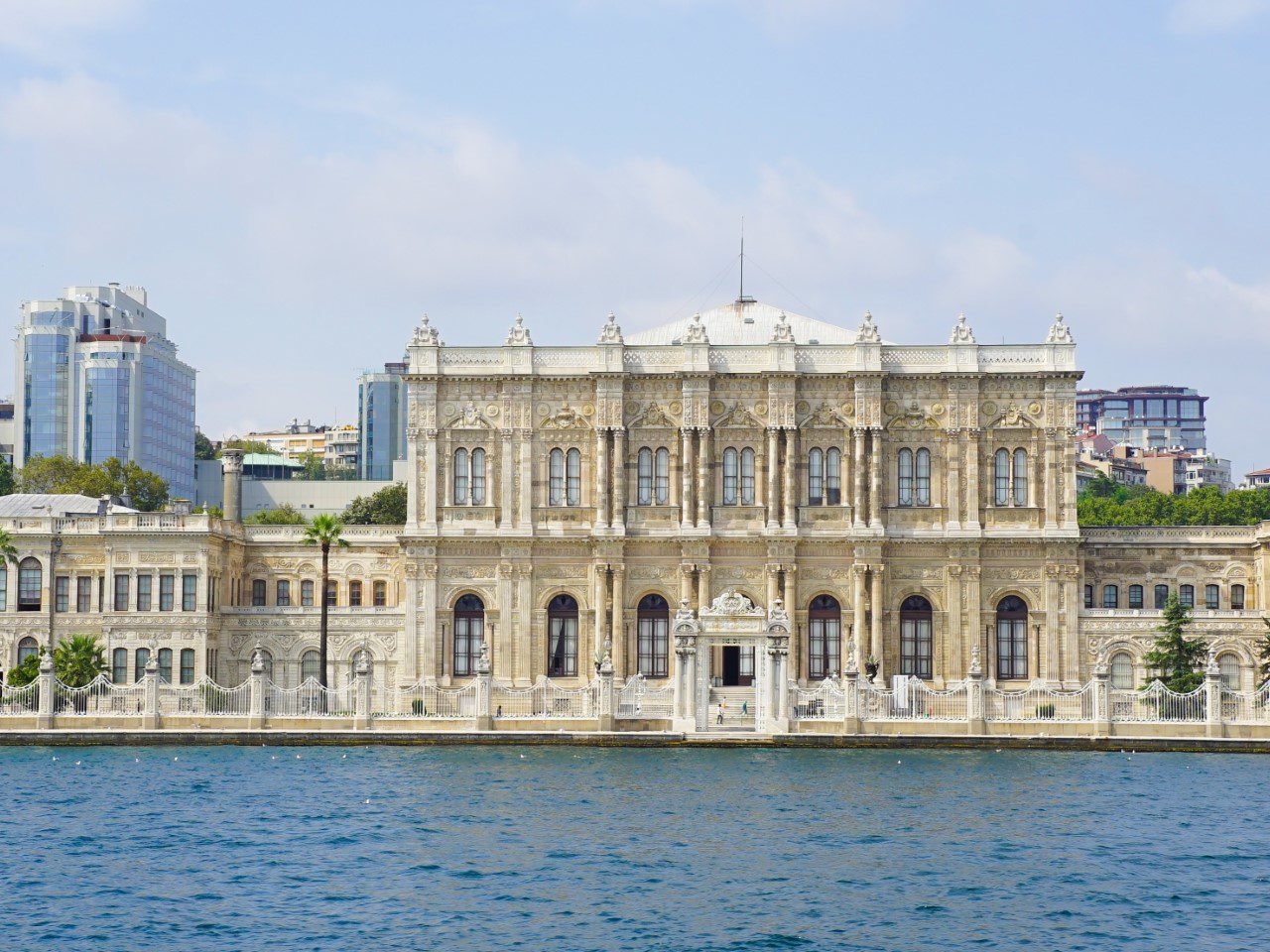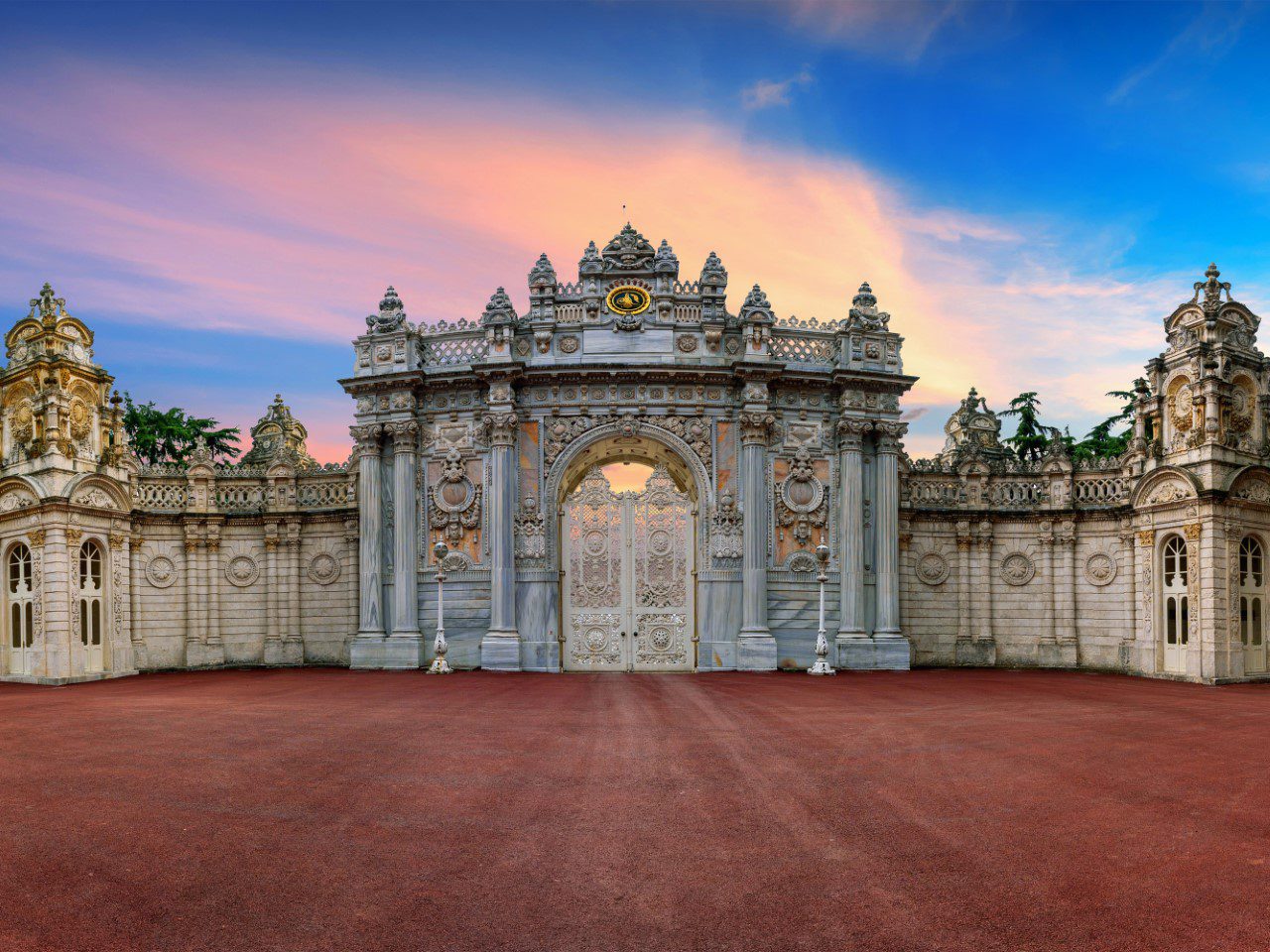Welcome to Istanbul, where history and grandeur combine to create a mesmerizing experience. One of the crown jewels of this magnificent city is the Dolmabahçe Palace. With its breathtaking architecture, rich history, and cultural significance, the Palace is a testament to the opulence and grandeur of the Ottoman Empire. In this blog post, we will delve into the fascinating world of the Palace, exploring its historical significance, architectural marvels, and the treasures it holds within its walls.
Dolmabahçe Palace Historical Splendor and Turkish Heritage
Dolmabahçe Palace, located in the Beşiktaş district of Istanbul, is a magnificent symbol of Turkish heritage and history. Constructed in the mid-19th century, it served as the Ottoman Sultans’ main administrative center and residence during the late imperial period. The Palace represents a blend of architectural styles, predominantly influenced by the Baroque and Neo-Classical movements.

Ottoman Architecture and Karabet Balyan
Designed by renowned architect Karabet Balyan, Dolmabahçe Palace showcases the grandeur and elegance of Ottoman architecture. Balyan, a prominent figure in Istanbul’s architectural history, left an indelible mark on the city’s skyline with his masterful designs. His intricate attention to detail and harmonious integration of Western and Eastern architectural elements make this Palace a true masterpiece.
National Palaces and Presidential Residence
Dolmabahçe Palace is part of a prestigious collection of palaces known as the National Palaces, reflecting Turkey’s rich cultural heritage. Today, it serves as the official residence of the President. It is open to the public, allowing visitors to explore its magnificent halls, opulent rooms, and lush gardens. Stepping into the Dolmabahçe Palace is like stepping back in time, as it provides a glimpse into the lavish lifestyle of the Ottoman rulers.

Dolmabahçe Palace: Istanbul’s Cultural Gem
Istanbul, often referred to as the cultural capital of Turkey, is home to numerous historical and architectural gems. Dolmabahçe Palace is a must-visit destination for tourists and history enthusiasts alike. Its location on the shores of the Bosphorus, overlooking the strait, adds to its allure, making it a picturesque setting that encapsulates the beauty and charm of Istanbul.
Dolmabahçe Palace’s Significance in Turkish History
The Dolmabahçe Palace holds immense significance in Turkish history. It served as the administrative center for the Ottoman Empire during a time of significant political and social change. Notably, the Palace was where Mustafa Kemal Atatürk, the founder and first President of modern Turkey, spent his last days and passed away. Atatürk’s room, preserved in its original condition, is a poignant reminder of his final moments and is an important pilgrimage site for many Turks. The Palace also witnessed the signing of the Treaty of Lausanne in 1923, which marked the end of the Turkish War of Independence and established the modern Republic of Turkey’s current boundaries.

The Palace’s unique features and noteworthy rooms
Dolmabahçe Palace boasts unique features and noteworthy rooms that captivate visitors. One such room is the Ceremonial Hall, known for its magnificent crystal chandeliers and grandeur. The Crystal Staircase, adorned with Baccarat crystal balusters, is another striking element of the Palace. With its massive proportions and ornate decorations, the Ballroom showcases the opulence and splendor of the Ottoman era. Visitors also have the opportunity to explore the Harem section, which provides insights into the private lives of the sultans and their families. The Palace’s lush gardens, featuring well-manicured lawns and vibrant flowers, offer a serene escape from the bustling city, providing a picturesque backdrop to the architectural marvel that is Dolmabahçe Palace.
Conclusion
Dolmabahçe Palace is not just a palace; it is a living testament to the grandeur of the Ottoman Empire and a symbol of Turkish history and heritage. Its awe-inspiring architecture, rich historical significance, and cultural treasures make it a majestic gem that captivates the hearts of all who visit. Exploring the Palace is like journeying through time, immersing oneself in the luxury and splendor of a bygone era. In Istanbul, add this Palace to your itinerary for an unforgettable experience.
Dolmabahçe Palace FAQs:
What is the history of Dolmabahce Palace?
The Palace has a rich history, serving as the Ottoman Sultans' primary residence and administrative center during the late imperial period. It played a significant role in Turkish history and witnessed important events.
What is the architectural style of Dolmabahce Palace?
The Palace showcases a blend of architectural styles, primarily influenced by Baroque and Neo-Classical movements. Its design, created by renowned architect Karabet Balyan, reflects the elegance and grandeur of Ottoman architecture.
Can visitors tour the interior of Dolmabahce Palace?
Yes, visitors have the opportunity to explore the interior of the Palace. Guided tours allow them to admire the Palace's opulent rooms, magnificent halls, and intricate decorations, providing a glimpse into the lavish lifestyle of the Ottoman rulers.
How can I visit Dolmabahce Palace?
You can purchase tickets on-site or online in advance to visit the Palace. It is advisable to check the Palace's official website for visiting hours, ticket prices, and any particular guidelines or restrictions.
What other attractions are near Dolmabahce Palace?
The Palace is located in Istanbul's Beşiktaş district, which offers several other attractions. Nearby points of interest include the Beşiktaş waterfront, the Naval Museum, Ortaköy Mosque, and the bustling Istiklal Avenue, providing visitors with various options for further exploration.



0 Comment